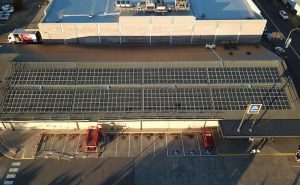It wasn’t that long ago that some leading energy analysts were predicting that the price of large scale generation certificates (LGCs) would fall to zero, or close to it, by around this time. But it didn’t, and now it’s not even close.
The price of LGCs – the key currency for the federal renewable energy target – has been trading around $48/MWh, despite the fact that the RET – having survived a federal Coalition attempt to kill it off – has been well and truly met.
Why is that? It’s not because analysts and traders got the pace of wind and solar deployment wrong. Much more wind and solar has been deployed than forecast, which normally would have forced the price down.
According to the Clean Energy Regulator’s Mark Williamson, it’s because the market didn’t anticipate the big demand for LGCs from governments such as the ACT and corporate buyers who have chosen to surrender LGCs rather than trade them.
“The forward markets for LGCs have got it wrong,” Williamson told the Smart Energy Council conference in Sydney on Wednesday.
“In 2019, the market thought the 2022 price would be $10. It is $48.
Williamson estimates that there are 5.8 million LGCs that have been cancelled voluntary, which adds to the 33GWh mandated by the renewables target, effectively taking it to more than 38GWh.
But that number is growing dramatically, and the number of LGCs that could be cancelled in 2022 could by 8 million. “We are seeing four times the number of cancellations in the first quarter, it is rising exponentially,” he said.
That means the market for LGCs is “right”, which also indicates that the price may not be coming down anytime soon.
That is having a couple of important impacts on the market. For a start, it is delivering an unexpected windfall to those wind and solar farms who have chosen to go “merchant” for all or part of their output.
Going merchant means that they take the market spot price, rather than locking in a long term price – which many do to provide a guarantee of earnings to make it easier to obtain bank finance.
The other intriguing aspect is the possible impact on some big retailers who elected to pay penalties for not meeting their RET obligations, on the expectation that they would be able to buy LGCs at a much cheaper rate within the three year window allowed to get a penalty refund.
The retailers were actually encouraged to do this by the CER, which changed its tune from previously disapproving of such actions, even if it was within the legislation.
“The use of shortfall is a commercial decision that allows liable entities to shift demand and take advantage of lower forward LGC prices in times of tight liquidity,” the CER said at the time.
But now it is not clear when, or if, the retailers could buy the LGCs at a lower price. Which means they have paid the full penalty for the shortfall, and that money is in the regulator’s bank account.
The retailers even got a tax windfall from the federal Coalition government when it decided to exempt them from tax on refunds of large scale certificate shortfall charges. Now the scale of the windfalls is no longer clear.













